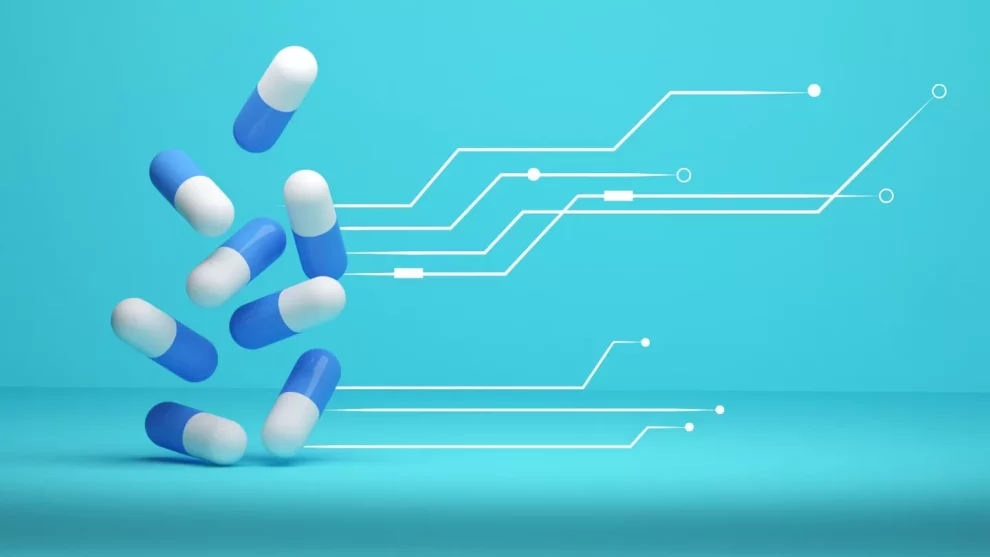The process of discovering and developing new medicines has challenged researchers for decades. Typically lengthy, costly, and prone to failures, innovation in drug discovery has been long overdue. Now, a revolutionary technology is promising to reshape this landscape – generative artificial intelligence (AI).
By analyzing datasets of existing compounds, generative AI models learn to design completely new molecular structures from scratch. These AI-generated molecules can be tailored to precisely interact with specific disease targets, accelerating the development of breakthrough treatments.
Let’s explore how generative AI is transforming drug discovery through an in-depth look at how it works, real-world applications, challenges, and the bright future it signals for medicine.
Unlocking the Power: Understanding Generative AI
Generative AI refers to algorithms capable of producing new, synthetic samples based on patterns learned from existing training data. Unlike predictive modeling, generative models create completely original outputs.
In drug discovery, these algorithms study vast databases of known chemicals and drugs. By analyzing molecular features, functional groups, and other intricate characteristics, the models learn the “language” of chemical structures.
Armed with this knowledge, generative models can then propose entirely new molecular entities with desired medicinal properties. It’s akin to an AI chemist tirelessly experimenting in silico to create better drug candidates.
Key Generative AI Models Powering Drug Discovery
Several types of generative algorithms show immense promise for enabling AI-driven drug design:
- Variational autoencoders (VAEs) – VAEs compress chemical data into a more efficient latent representation that captures essential features. By sampling from this latent space, VAEs can generate focused molecular variations with specified medicinal characteristics.
- Generative adversarial networks (GANs) – GANs employ two neural networks – a generator and discriminator – that compete against each other in a training regimen. The generator learns to create increasingly improved molecular structures, while the discriminator evaluates them. This drives overall model performance.
- Reinforcement learning (RL) – RL relies on an iterative trial-and-error process to accomplish a goal. In drug design, RL algorithms are rewarded for generating molecules with desired target affinity, pharmacokinetics, safety profiles and more.
Data Driving Discovery
The effectiveness of generative models depends heavily on the data used for training. Diverse, high-quality inputs are imperative, including:
- Chemical structures and bioactivity data of existing drugs
- Information on drug-target interactions
- Disease genomic and proteomic data
- Pharmacokinetic and safety parameters
- Desired specifications – target, potency, toxicity thresholds, etc.
By assimilating vast volumes of multimodal biomedical data, generative models learn to output optimized molecules for treating specific diseases. The more comprehensive the data, the more precise the AI-designed drugs.
From Hype to Reality: Current Applications
While much discussion around generative AI remains theoretical, real-world implementation in drug discovery has already begun yielding tangible results across multiple fronts:
Rare Disease Drug Development
Treatments for rare diseases are severely lacking, given smaller patient pools offer limited financial incentives. By scanning genomic data and known disease proteins, however, generative AI can pinpoint novel targets and rapid design first-in-class drug candidates.
Drug Repurposing
Analyzing connections between existing drugs and previously unknown disease pathways further enables drug repurposing – finding new uses for approved therapeutics. This circumvents lengthy clinical testing, fast-tracking new treatment options.
Lead Optimization
Early drug candidates seldom exhibit suitable pharmacological activity and safety. But armed with optimization criteria, generative models can redesign molecules to enhance potency, bioavailability, and minimize toxicity issues.
Pioneering companies already utilizing generative AI for transforming drug discovery include:
- Exscientia – uses AI to drive end-to-end small molecule drug discovery and development
- Insilico Medicine – leverages AI for target identification, molecule generation, and aging research
- BenevolentAI – focuses on applying AI to develop treatments for previously untreatable diseases
As more real-world implementation mounts, so too will our arsenal of AI-discovered drug candidates offering new hope against countless afflictions.
Navigating the Challenges Ahead
Despite the immense promise, successfully harnessing generative AI in a robust, ethical manner remains rife with challenges:
Data Limitations
Insufficient or biased training data inherently limits model accuracy. As the adage states – garbage in, garbage out. Efforts toward accumulating high-quality, diverse chemical datasets are thus critical.
Interpretability Issues
The sophisticated nature of generative neural networks makes explaining their workings challenging. Not fully understanding model behavior can undermine proper validation. Advancing model interpretability and explainable AI is therefore vital.
Equitable Access Concerns
Optimizing access and affordability of AI-discovered drugs requires careful policy forethought to prevent exploitation. Collaboration between commercial and government entities can help address this pressing issue.
Through coordinated efforts across industry, government, and academia, these complex issues are surmountable. Only by doing so can we unlock the full potential of this technology.
The Outlook for AI-Driven Drug Discovery
Generative AI has sparked a new paradigm, opening up previously unimaginable possibilities for overhauling the antiquated pharmaceutical industry. Early success stories underscore its immense capability for enabling fundamentally better medicines.
Looking ahead, as algorithms grow more advanced, integrating larger datasets and reinforcement feedback on synthesized compounds, AI-based drug discovery will only accelerate. We are witnessing the genesis of a new era of data-driven, personalized medicine.
A future where devastating diseases once considered untreatable can meet their match through AI-designed precision drugs no longer feels like a distant dream. For countless patients globally, this promises hope of leading longer, healthier lives, unencumbered by affliction.
Medicine stands on the cusp of a seismic shift. At the heart pulsing this change is generative AI – writing the next great chapter in humanity’s enduring mission to prevail against suffering itself.
















Add Comment